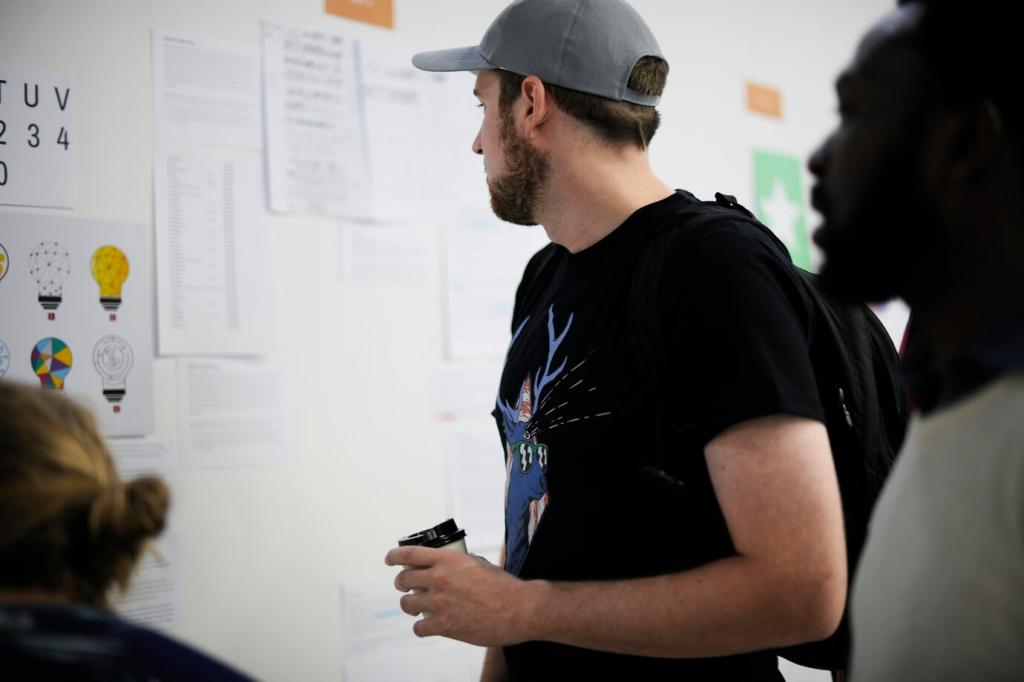Storytelling Strategies in Educational Writing
Hook Students with Narrative Beginnings
Start with a Problem They Care About
Begin with a relatable dilemma—lost homework data, a town with brown tap water, or a rover’s failing battery. When students sense consequence, they lean in. Try this tomorrow and comment with the problem that sparked the most questions.
Anecdotes that Anchor Attention
A science teacher opened with a ninety‑second story about a broken bridge and a rushed inspection. That tiny narrative made load distribution unforgettable. Share your quickest class-opening anecdote so others can adapt it responsibly.
Data That Tells a Human Story
Transform statistics into a story arc: a trend becomes a rising conflict, an outlier becomes a twist, and the conclusion suggests action. Post an example in the comments, and subscribe for a downloadable template to practice this technique.
Structure Lessons Like Stories
Exposition as Clear Objectives
Treat learning goals like opening exposition. Name the setting, the protagonists (concepts), and what will change. When learners see a path, they walk it faster. Share your rewritten objectives that read like intriguing chapter previews.


Rising Action through Inquiry
Use questions, contradictions, and mini‑experiments as plot complications. Productive struggle is your rising tension. Set checkpoints, not spoilers. Tell us which inquiry prompt generated the liveliest debate in your classroom.
Craft Memorable Educational Characters
Turn fractions into negotiators, mitochondria into power managers, or thesis statements into directors. Personification offers handles for memory. Share one concept you personified and how students retold it in their own words.
Craft Memorable Educational Characters
Create composite avatars—a newcomer reader, a cautious engineer, a curious historian—so learners test explanations against realistic needs. Invite students to author avatar diaries. Comment with an avatar that improved peer feedback quality.




Metaphor, Imagery, and Sensory Detail
Select analogies that scale and do not mislead: electric circuits as water flow, revision as sculpting, ecosystems as neighborhoods. Test limits openly. Share an analogy that worked across grade levels and explain why it traveled well.
Metaphor, Imagery, and Sensory Detail
Invite learners to hear the ‘beat’ of iambic meter or feel friction as warmth in their palms. Sensory cues anchor abstractions. Comment with a sensory prompt that unlocked understanding for your students this week.

Have students write three‑sentence narratives showing concept application: situation, decision, consequence. These reveal reasoning fast. Share your favorite prompt and the most surprising student solution that emerged from it.

Use rubrics that track clarity of conflict, evidence as turning points, and coherence of resolution. Comment with one rubric criterion that improved feedback conversations and supported revision without inflating workload.

Invite learners to curate artifacts with commentary arcs—what changed, why it changed, and what remains challenging. Subscribe to get a portfolio reflection guide aligned to narrative milestones and self‑assessment moments.
Multimodal Storytelling in the Classroom
Before drafting, sketch scenes of understanding: the misconception, the aha moment, and the transfer. Visual planning exposes gaps early. Share a storyboard snapshot and describe one improvement it triggered in your lesson.
Multimodal Storytelling in the Classroom
Short audio episodes let students rehearse structure and audience awareness. Teach cold opens, transitions, and sign‑offs. Post a link to a class podcast, or describe an episode idea you want to pilot next month.


